The forearm anatomy is complex, and if you’re not careful, you can injure your lower arms by lifting overly heavy weights. But with occlusion training for your forearms, you can have your cake and eat it, too.
That’s because you can make significant forearm gains with blood flow restriction training while using a fraction of the weight that you usually would during traditional strength training.
Related posts
How to do occlusion training for forearms
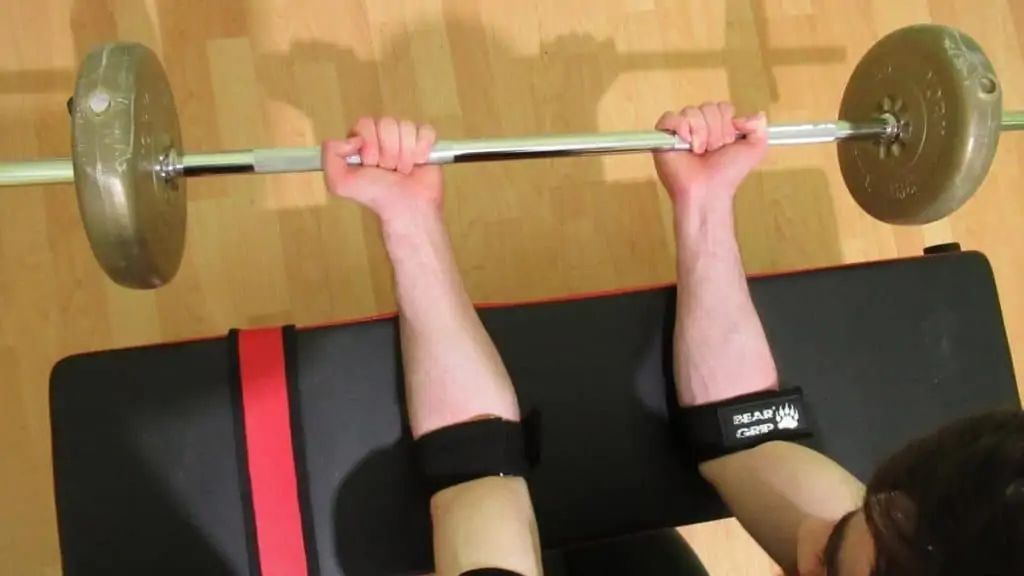
Many people wrap the BFR bands under their shoulders when doing occlusion training for their forearms. However, while this might work, it’s sub-optimal.
You want to wrap the bands under your elbow to get the maximum training effect.
For the longest time, I used floss bands for all of my blood flow restriction training needs. However, I’ve since realized that this was a big mistake for BFR training in general, and for arms in particular.
With floss bands, you’ll never get the same tightness on both arms, which leaves you open to muscle imbalances.
Also, it’s a complete and utter pain to wrap the bands yourself. In fact, it’s so tricky that it’s arguably more challenging than the training protocol itself.
That’s why I use specialist BFR bands for the forearms. They take a fraction of the time to put on, and you can get the same exact tightness for each arm, which means that one arm won’t suddenly give out before the other due to the mismatch in cuff pressure.
What are the benefits of doing occlusion training for forearms?
Doing occlusion training forearms style gives you a wicked pump—that’s for sure. But there are some underestimated benefits that can fast-track your forearm transformation.
Lower injury risk
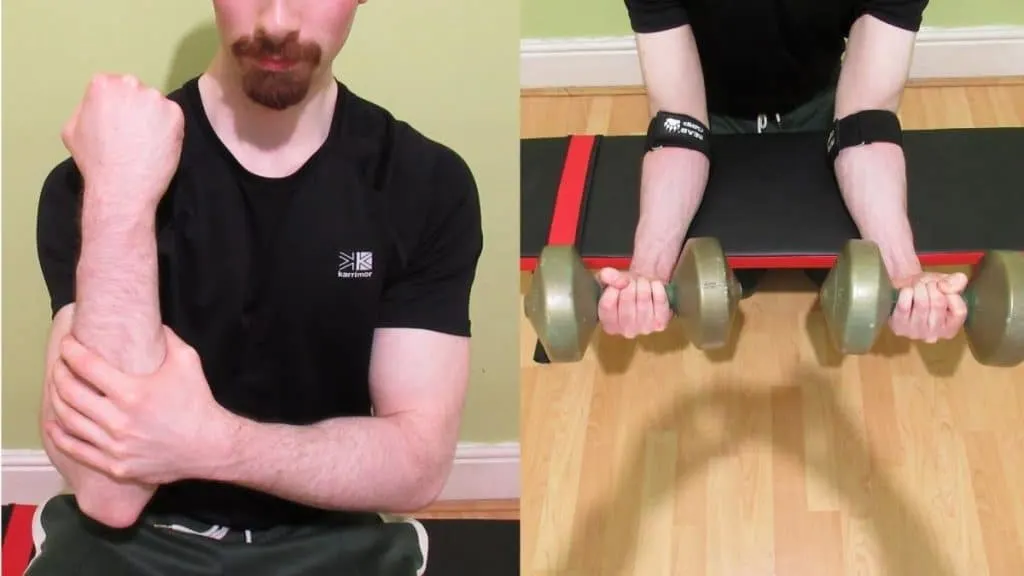
Chances are, if you’re not training with some regularity, then you’re not growing. In fact, you’re probably losing muscle.
As such, if you want that Popeye forearm size, then it’s crucial to spend as little time on the sidelines as possible. Unfortunately, typical forearm training isn’t exactly wrist–friendly.
Since the wrist joint is small, it’s particularly susceptible to injuries that result from poor form. Add a heavy barbell into the mix, which is very possible to use because of the small wrist curl range of motion (ROM), and you’re practically begging to pick up an ache or sprain sooner or later.
But with blood flow restriction training, you can use a fraction of the weight that you would during regular resistance training and still get comparable gains. Naturally, this means that your injury risk is much lower because your joints, tendons, and ligaments are subjected to less tension.
Stronger muscle pump

We all love the pump, especially when it’s raging through our arms like a wildfire.
However, no training technique gives you the same pump as occlusion training. If you’ve never tried it, then you’ll feel like someone is pumping air into your small forearms to inflate them.
In fact, the pump that you get from forearm blood flow restriction training is so addictive that you’ll want to do it every workout. And while I wouldn’t recommend blitzing your forearms everyday, this does bring us onto another nice benefit of BFR training. [1]
Faster recovery

Since you’re lifting lighter weights with forearm occlusion training, you naturally cause less muscle damage despite the fact that you’re lifting close to failure and using high volumes. This is because there’s less mechanical tension to break down the fibers and cause damage.
Naturally, this enhanced recovery means that you can train your forearms more frequently without running into issues. So whereas before, 1-2 x per week frequency may have been your limit, now you might be able to bring up your lower arms by training them hard 3 times a week.
Plus, since BFR training is so time–efficient, it’s not like these 3 weekly sessions are going to eat into your schedule. If you have grit, determination, and a spare 5-10 minutes, then you can get a great occlusion training forearm workout.
Increased vascularity

This is anecdotal, but when I did occlusion training for my forearms, I seemed to have more vascular forearms even when I was outside of the gym. Sure, I didn’t have the biggest forearms in the world, but they had great definition.
This will definitely give your physique an edge by making you look bigger and leaner. And more importantly, it means that you don’t need to waste your hard-earned money on questionable nitric oxide supplements!
More mental toughness
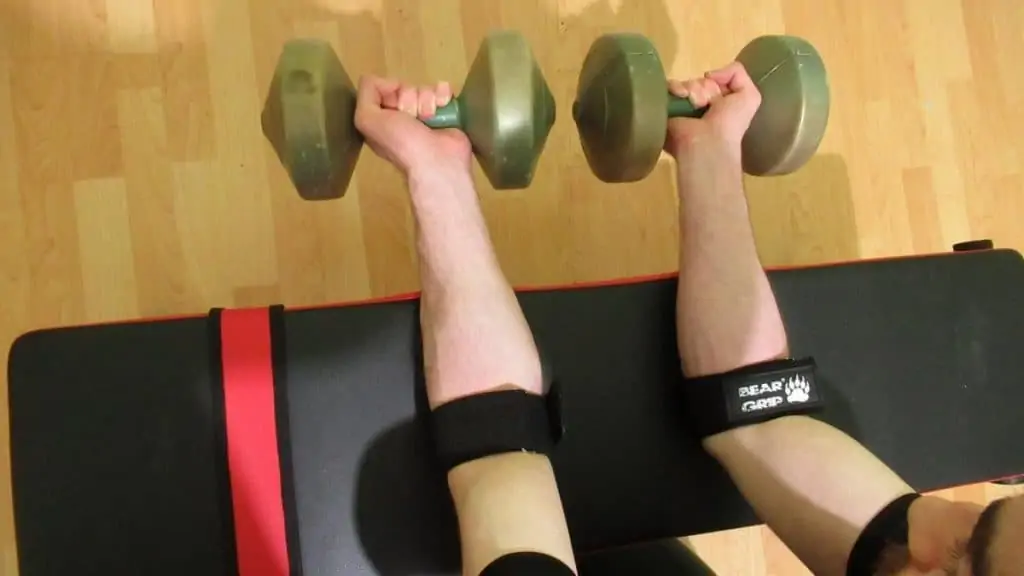
I won’t sugarcoat it. BFR training sucks when you first try it.
And if you think forearm occlusion training is tough, then just wait until you do it for your quads. Not fun at all.
However, at the end of a BFR workout [2], however short it may be, you feel a strange sense of accomplishment, as if you’ve just climbed a moderately high mountain.
And I’m not exaggerating, either. Most people in the gym do more texting than lifting. So knowing that you’ve put in a decent shift and done something that most of the lifting population wouldn’t have the bottle to do really fills you with confidence.
Plus, extra forearm hypertrophy is hardly ever a bad thing.
FAQ
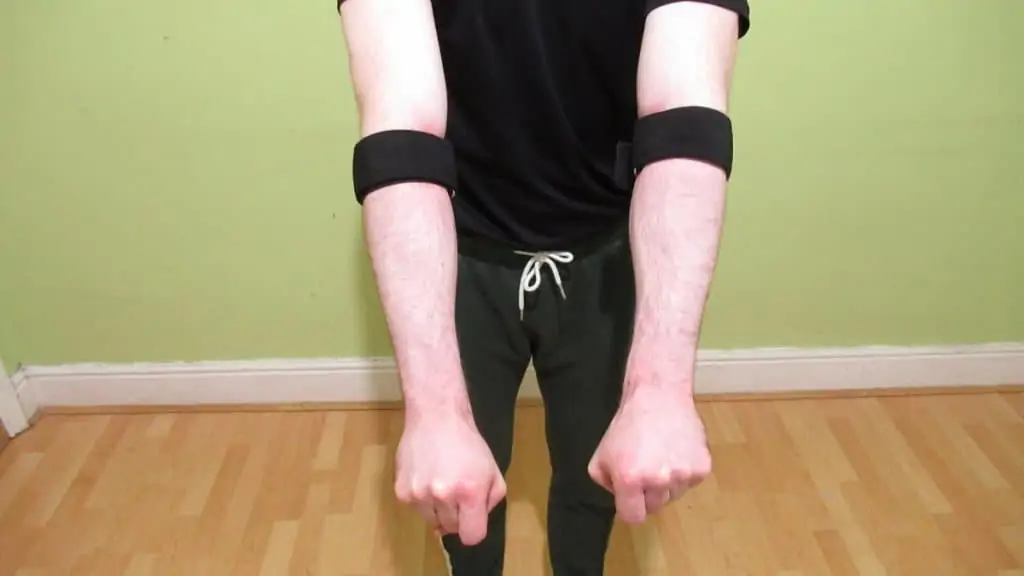
Where should I put the BFR bands on my forearms?
Put the bands under your elbows for the best results. Avoid putting them under your shoulders when training your forearms.
Is doing occlusion training for forearms dangerous?
Unless you have any medical conditions that could interfere with BFR training, then no, it shouldn’t be dangerous. Just don’t wrap the bands too tight, and always check with your doctor if you have doubts about this admittedly dubious looking training method.
How many sets and reps should I do when performing blood flow restriction training for my forearms?
I do a set of 30 followed by 2 sets of 15, followed by an AMRAP (or another set of 30 if I don’t want to overtrain). If you have a weak forearm, be sure to have even tightness on both bands to avoid worsening your muscle imbalances.
See also
The verdict on forearm occlusion training
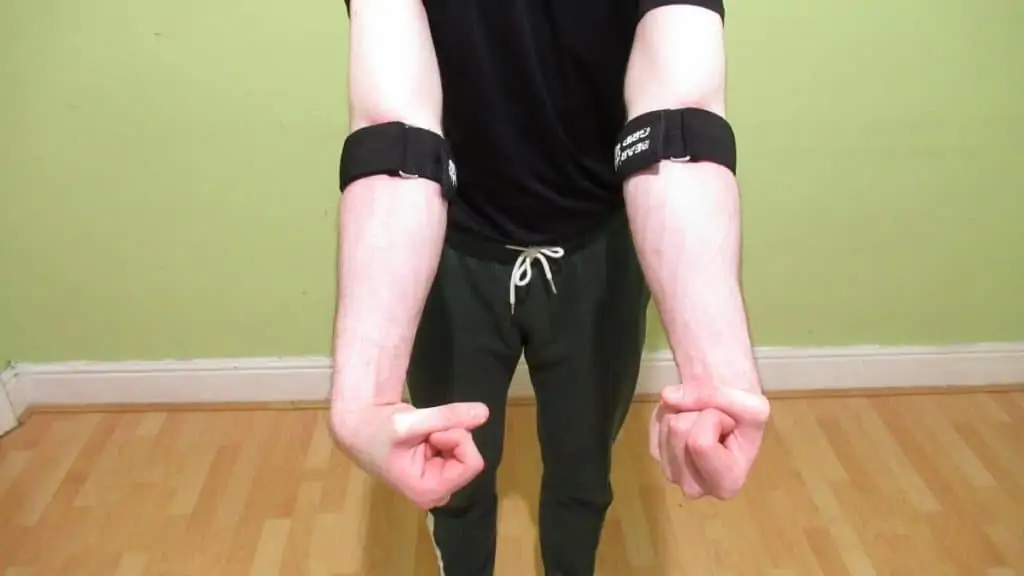
Forearm occlusion training is a very potent muscle building tool. Just make sure to do it towards the end of your session so that you can actually use your lower arms for other essential activities like re-racking your weights and shaking your protein.
Also, whatever you do, don’t wrap the bands too tightly. Otherwise, you’ll severely limit the number of reps that you can do, which in turn will limit your muscle growth. And we wouldn’t want that, would we?
References
- Spranger, M. D. (2020). Commentary: Blood Flow Restriction Exercise: Considerations of Methodology, Application, and Safety. Frontiers in Physiology. https://doi.org/10.3389/fphys.2020.599592
- Centner, C., Wiegel, P., Gollhofer, A., & König, D. (2018). Correction to: Effects of Blood Flow Restriction Training on Muscular Strength and Hypertrophy in Older Individuals: A Systematic Review and Meta-Analysis. Sports Medicine, 49(1), 109–111. https://doi.org/10.1007/s40279-018-1013-2

